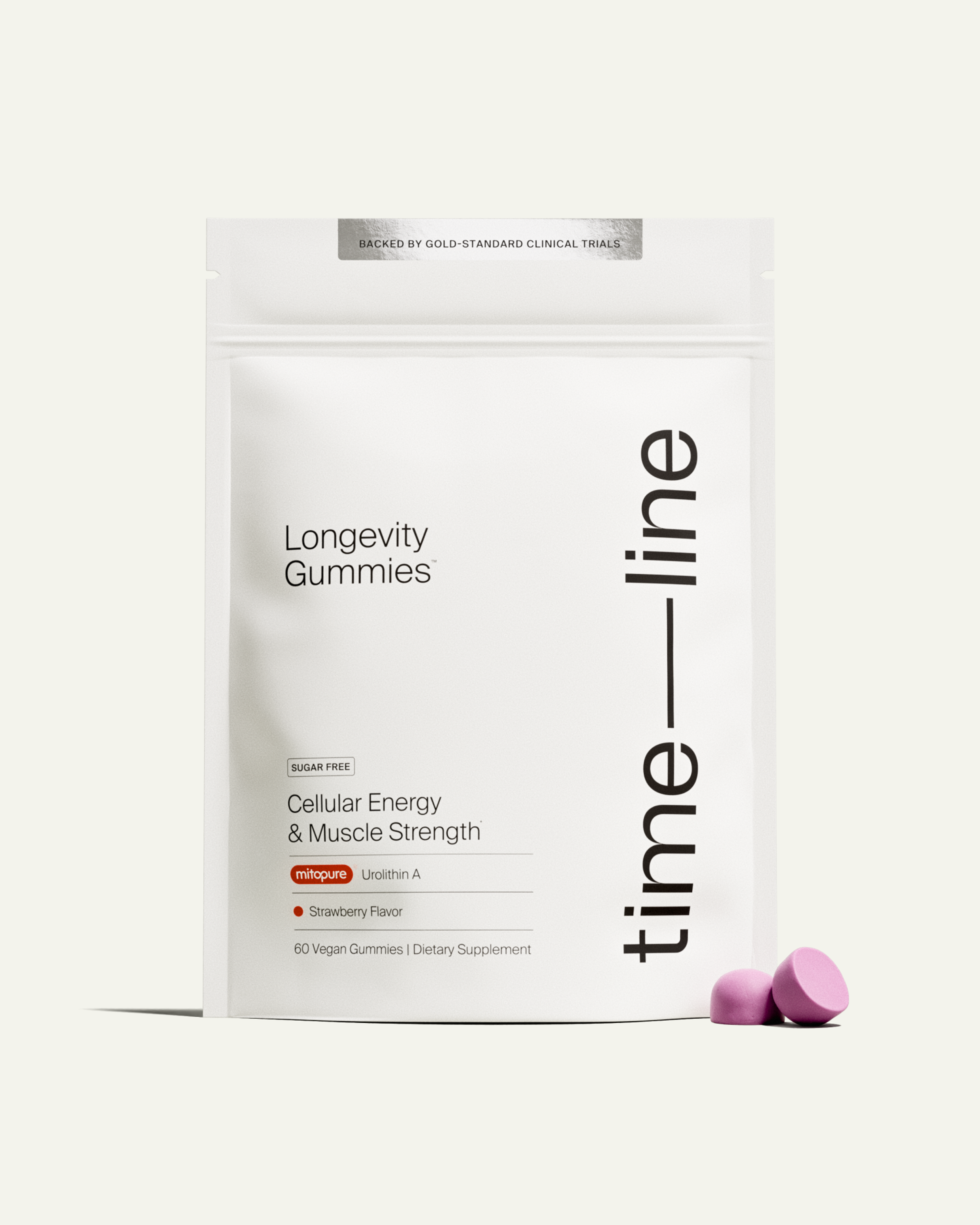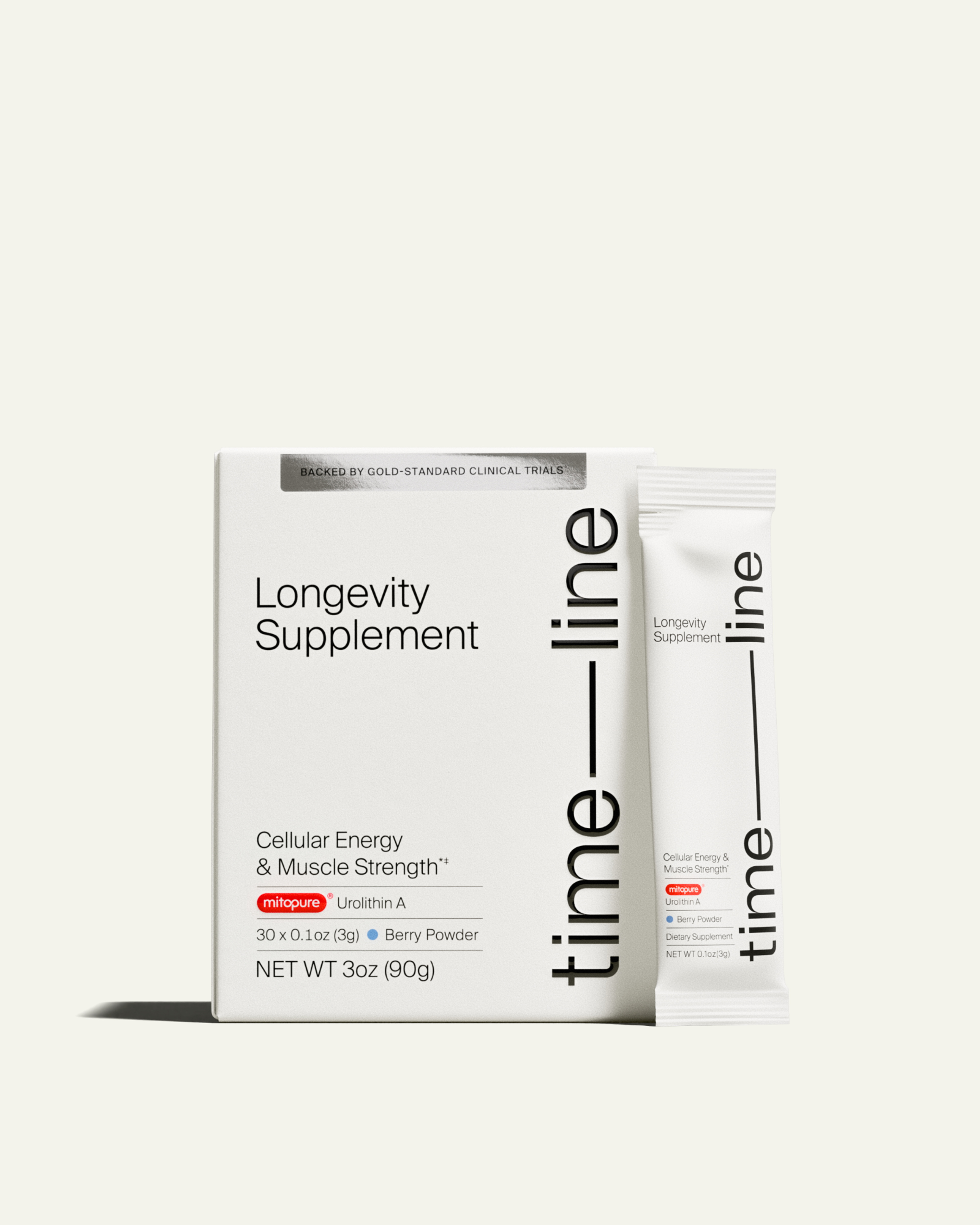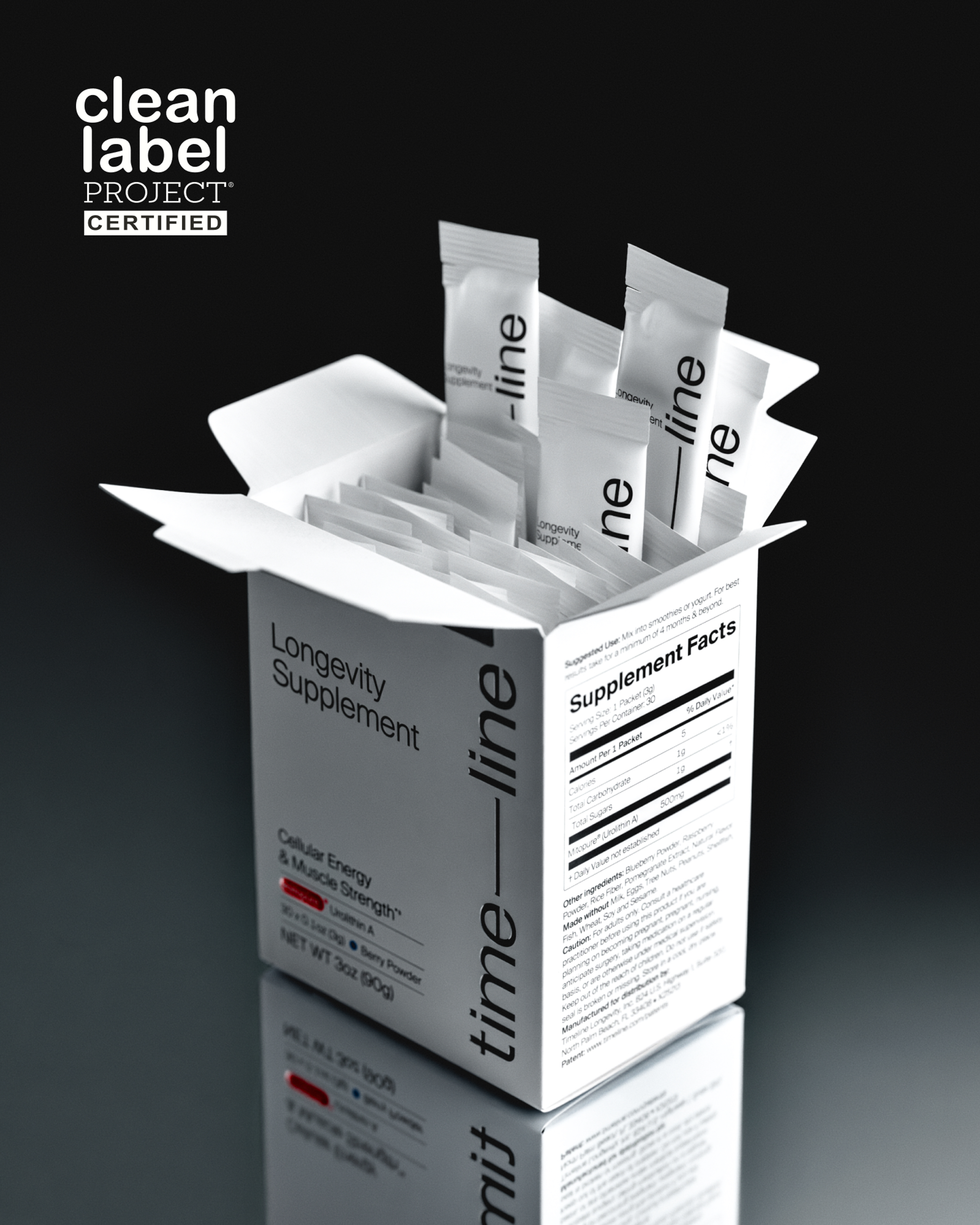Mastering Endurance Training to Boost Your Fitness
Looking to up your physical performance and stamina? Discover how to master endurance training and why it should be part of your workout routine.

What to know
Incorporating endurance training into your workout routine can help increase your muscular strength, stamina, and overall health.
One prime way to improve endurance is by supporting your mitochondrial health, the energy center of your cells.
Types of endurance exercises may involve walking, running, biking, intervals, and weight training.
Training in various heart rate zones and increasing your VO2max ups your workout efficiency and improves your physical fitness.
Adding a supplement like Mitopure® to your regimen can support muscule health at the cellular level.
Do you find yourself easily winded during your workouts or feel like your level of fitness is stagnant? If so, incorporating endurance training into your routine can get you out of that rut and take things to the next level.
Whether you are a competitive athlete or novice exerciser, improving your endurance can make your workouts more enjoyable, improve your physical and mental health, and help you to reap greater benefits.
One key way to improve your endurance is by supporting your mitochondrial health, the energy center of your muscle cells.
In this practical guide, we’ll unpack the ins and outs of endurance training. We’ll discuss why you should do it, ways to improve your endurance and mitochondrial health, and how to use your heart rate to achieve peak physical fitness.
What Is Endurance Training?
The term “endurance” refers to your body’s physical ability to sustain an exercise for a prolonged period. The main purpose of endurance training is to improve your stamina and efficiency during exercise so that you can sustain longer, harder workouts.
As you get older, your endurance may begin to suffer. Several factors may be at play, such as lack of exercise, poor nutrition, and declining mitochondria numbers. [1]When this occurs, it can affect physical performance, energy levels, and decrease muscle mass.
Prioritizing endurance training allows you to improve your performance in your preferred form of exercise - whether that be competitive running, biking, the gym, or power walking.
Endurance exercises can involve a combination of workouts such as cardio, bodyweight, and weight lifting. These all have the common goal of increasing your cardiovascular and muscular strength so you can crush your fitness goals with more ease.
Let’s dive into how to improve endurance to achieve your goals.
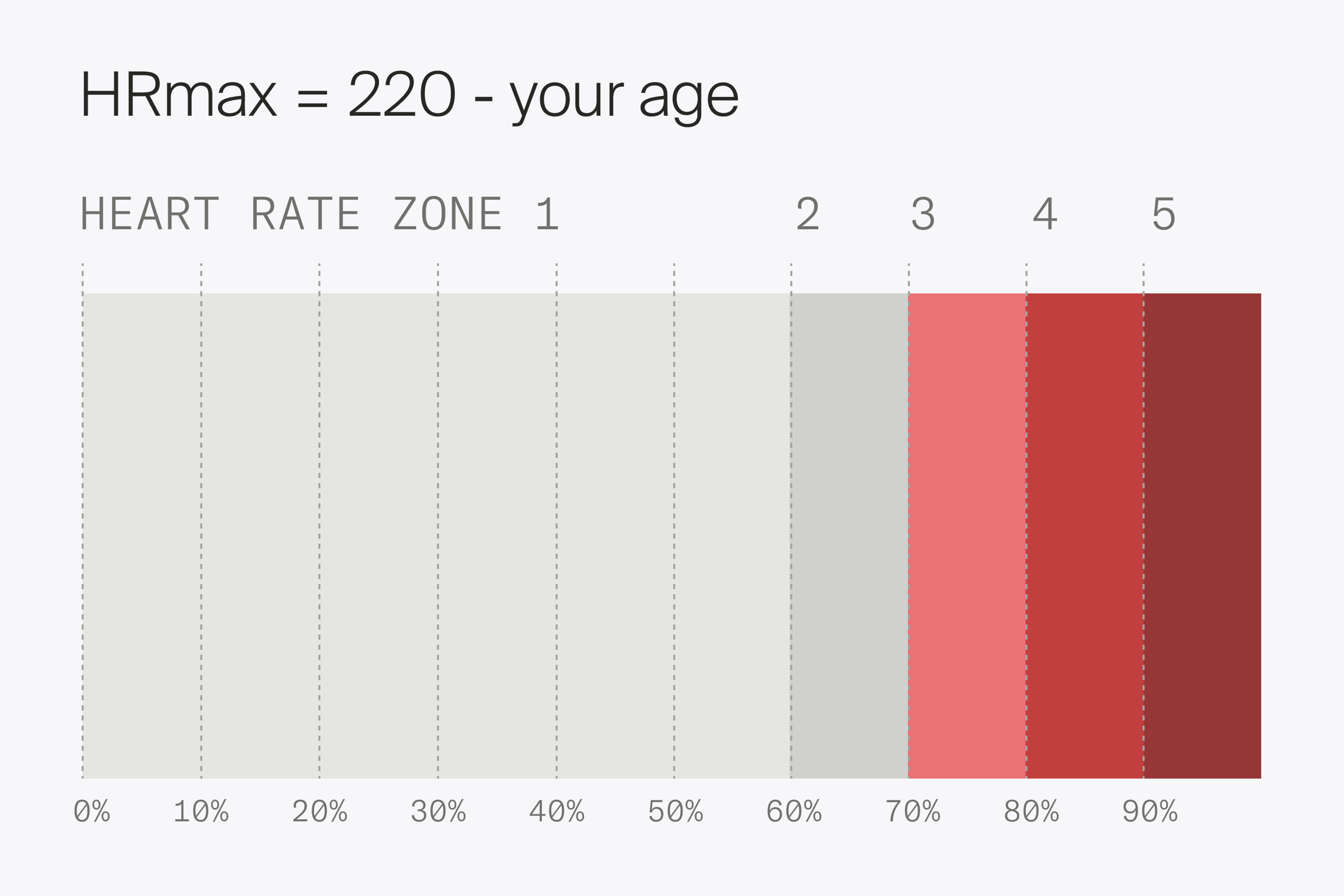
How to Build Endurance Using Heart Rate Zones
One way you can learn how to increase endurance is by training in different heart rate zones. There are five different exercise heart rate zones that correspond with a certain heart rate and level of intensity.
The heart rate for each heart rate zone is based on a percentage of your maximum heart rate, or HRmax. To calculate your HRmax, simply subtract your age from 220.
For example, if you are 42 years old, your HRmax is approximately 178 beats per minute (bpm).
This number is just an estimate, and going over or under it while training is normal. Training in different heart rate zones involves keeping your heart rate within a certain range of percentage of your HRmax.
- Zone 1 (50-60% of HRmax)
- Zone 2 (61-70% of HRmax)
- Zone 3 (71-80% of HRmax)
- Zone 4 (81-90% of HRmax)
- Zone 5 (91-100% of HRmax)
Exercising in various heart rate zones will help you build up your endurance and your comfort level for more challenging workouts.
It also helps to mix up your workouts so you have a balance of all-out efforts, moderate intensity, and active recovery when needed.
How to Train in Different Heart Rate Zones
You may be wondering what heart rate zone you should exercise in and when. Let’s dig into each zone separately and what each of them looks like in your weekly workout routine.
Zone 1
This is the lowest intensity zone at 50-60% of your HRmax. One way to tell if you’re in Zone 1 is that it should not be difficult to breathe, and you can sustain a conversation easily.
Exercising in this zone helps keep your energy use steady, boosts recovery, and prepares you to train in higher-intensity heart rate zones.
Examples of Zone 1 exercises: Choose exercises that are not as intense and allow you to easily control your heart rate, such as walking. Zone 1 workouts are perfect for active recovery days or as active warm-ups or cool-downs once or twice a week.

HRmax - Zones 1&2 Training
Zone 2
This is also a low intensity at 61-70% of your HRmax, but more work than Zone 1. This is when you are primarily in fat-burning mode. Your breathing should pick up a little bit in this zone, but you should be able to hold somewhat of a conversation. Zone 2 exercises can typically be sustained for longer periods of time.
Training in this zone helps build up your endurance, aids in more efficiently burning fat, and builds muscular fitness.
Examples of Zone 2 exercises: Walking, rowing, cycling, elliptical training, and jogging at the appropriate heart rate intensity all count as Zone 2 workouts.
It can feel challenging to keep your pace and heart rate low if you’re used to running fast during your workouts, but practicing patience and taking it slow will actually improve your speed over time.[2]
Zone 3
Considered moderate intensity, Zone 3 training involves working out at 71-80% of your HRmax. It is especially important for improving circulation in the heart and muscles. In Zone 3, you’re breathing more heavily than in Zone 2, and it’s difficult to sustain a conversation. For many, this is when they begin breathing through their mouth rather than their nose.
Training in this zone can help you more effectively pump blood through the body and improve the efficiency of your workouts, making them feel easier over time. It also helps you to train yourself to manage any type of competition or race day, where you’ll need to push your pace without tiring out.
Examples of Zone 3 exercises: If you’re a runner, this means running at a pace that is challenging but you can sustain, also known as a tempo run. It can also involve other exercises like biking, rowing, and elliptical training at more challenging intensities or durations.[3]

HRmax - Zones 4&5 Training
Zone 4
This zone is considered hard and involves working out at 81-90% of your HRmax. In this zone, you’re breathing heavily, sweating, and definitely could not hold a conversation.
This is when you are almost performing an all-out effort, pushing your pace and challenging yourself for a shorter period of time. Training at this intensity can improve your speed endurance and help you withstand more difficult workouts.
Examples of Zone 4 exercises: Interval training and interval runs. This involves short bursts of higher-intensity efforts followed by a rest or active recovery period. For a run, this may mean running at a fast pace or sprinting for a minute, jogging or walking for a minute to recover, then repeating this several times.
Zone 5
This is your maximum effort at 91-100% of your HRmax. If you’re new to working out or have only been training for a short period, it’s not recommended (or needed) to train at this level of intensity. More experienced athletes who are trying to improve their performance will use Zone 5 as part of their training.
During these workouts, your heart, blood, and lungs will be working at their maximum capacity to get you through intense workouts.
Examples of Zone 5 exercises: Any cardio exercise like running, swimming, or biking at maximum speed with short recovery breaks. They are for experienced exercisers only and should only be performed a maximum of 2-3 times per week.[4]
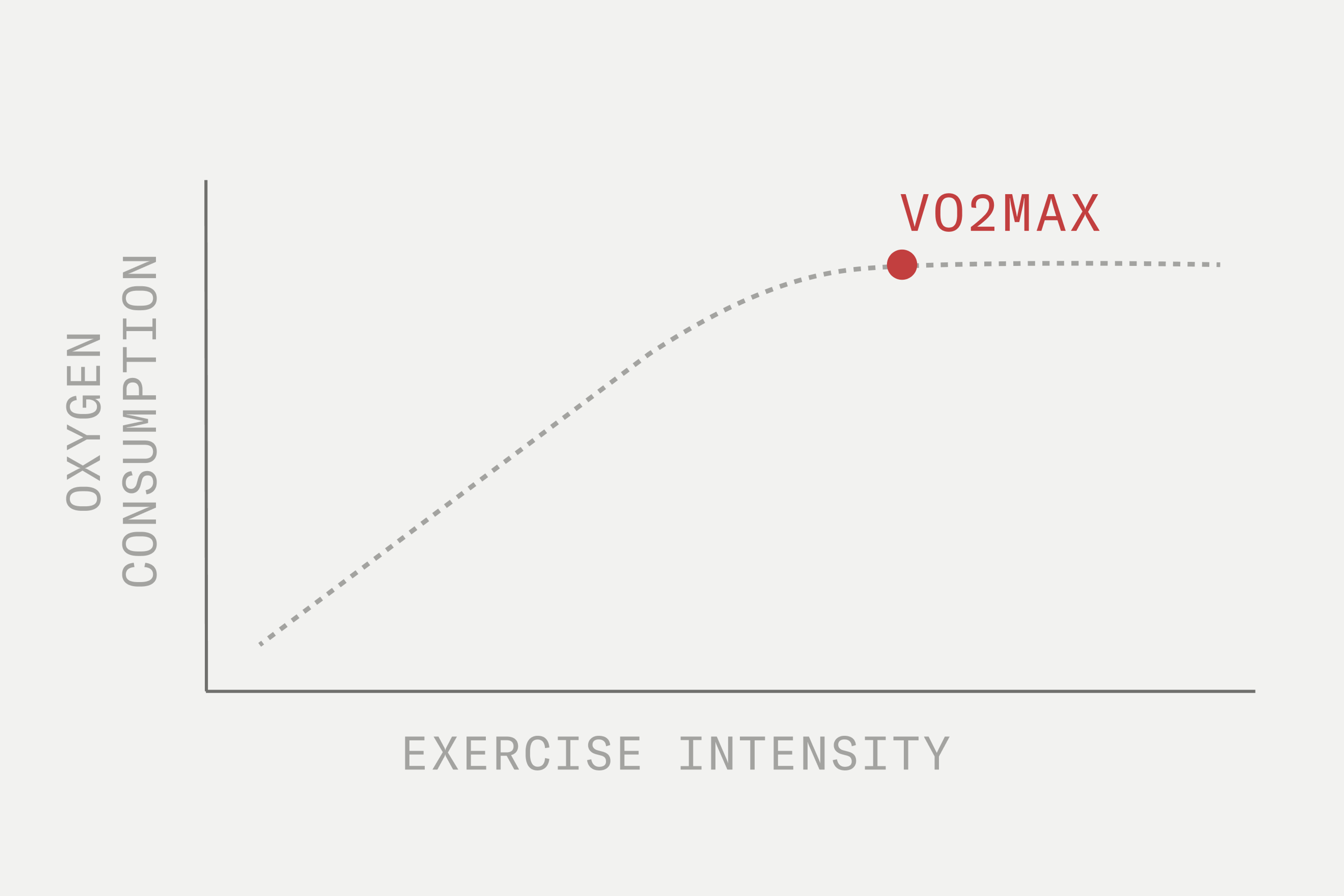
VO2 Max
As you work to train in these various heart rate zones, the ultimate goal is to improve what is called your VO2 max. This is the maximum amount of oxygen you can consume during exercise. A higher VO2 max relates to a higher fitness level.
As such, learning how to improve VO2 max is essential to building your cardiovascular and muscular endurance.
The “V” stands for volume, the “O2” is for oxygen, and the “max” is for maximum. The higher your VO2max, the longer you can endure the workout [5]and the more efficient your workouts will be.
Just like your mitochondria, your VO2 max tends to decline with age. But you can slow this decline and even increase it over time. You can do this via exercises for cardiovascular endurance like running, biking, and HIIT training, paired with exercises for muscular endurance like strength and bodyweight exercises.
You can estimate your VO2 max with most fitness trackers during your workout.
VO2 Max Training
There are two main ways to increase your VO2 max: by increasing the amount of blood your heart can pump and by increasing the amount of oxygen your muscles can utilize during exercise.
- Do a combination of interval and continuous training - This means you should perform interval workouts at varying speeds (e.g., HIIT training) as well as workouts that are at a more continuous, sustained pace (e.g., zone 2 cardio).
- Exercise at a higher intensity - This involves pushing yourself closer to your HRmax for brief periods of time whenever possible. This will help build up your fitness level and, therefore, your VO2 max.
Endurance training and your mitochondria
Endurance training increases the number and quality of mitochondria in muscle cells, supporting your physical fitness and overall muscle performance. [6]This is similar to what Mitopure® aims to do through its action on the mitochondria. Mitopure triggers the mitochondrial recycling process called mitophagy. This recycling is a quality-control mechanism for the mitochondria to make sure they stay as high-functioning as possible. With higher-functioning mitochondria comes more energy and better physiologic processes, which will allow you to further your endurance training.

Mitopure Softgels
4.5 · 3734 reviews
The simplest form of Mitopure
Fuel Utilization in Different Heart Rate Zones
Your nutrition for training is another essential but sometimes overlooked part of the endurance equation. Understanding how your body utilizes fuel in the different heart rate zones can help ensure you’re nourished for optimal performance.
During Zones 1-3, your body is more heavily utilizing fat for fuel. This means a higher percentage of your body fat is burned than in zones 4 and 5. Fat takes longer to burn, which provides you with steadier energy for longer durations.
During Zones 4 and 5, your body is more readily utilizing carbohydrates for fuel. Carbohydrates are a quick energy source, helping to fuel your body quickly when it needs it during intense, fast-paced efforts.
Since your body will often need to tap into your body’s carbohydrate stores for fuel, it’s essential to nourish your body with quick-digesting carbs before a workout, such as fruit, whole-grain bread, or oatmeal.[7]
Combining Endurance and Strength for the Best Results
With the right combination of endurance vs. resistance training, you’ll be one step closer to peak performance. Adding a mix of endurance workouts at varying intensities, such as weight training, running, biking, walking, and intervals, allows you to get the best of both worlds.
By focusing on training in different heart rate zones, improving your VO2 max, and nutrition, you will notice gains in your workout effectiveness and enjoyment.
Improving muscle recovery after workouts is also important to avoid injury and enable you to get back to doing what you love faster.
If you need more support in building muscle strength, Mitopure® can help.
Always consult with your medical team, personal trainer, and registered dietitian before starting a new exercise program.
Authors

Author
Dietitian-Nutritionist, and Health Content Writer

Reviewed by
PhD, RD CSSD
References
- ↑
Chistiakov DA, Sobenin IA, Revin VV, Orekhov AN, Bobryshev YV. Mitochondrial aging and age-related dysfunction of mitochondria. Biomed Res Int. 2014;2014:238463. doi: 10.1155/2014/238463. Epub 2014 Apr 10. PMID: 24818134; PMCID: PMC4003832
- ↑
Neufeld EV, Wadowski J, Boland DM, Dolezal BA, Cooper CB. Heart Rate Acquisition and Threshold-Based Training Increases Oxygen Uptake at Metabolic Threshold in Triathletes: A Pilot Study. Int J Exerc Sci. 2019 Jan 1;12(2):144-154. PMID: 30761193; PMCID: PMC6355121.
- ↑
Casado A, Hanley B, Santos-Concejero J, Ruiz-Pérez LM. World-Class Long-Distance Running Performances Are Best Predicted by Volume of Easy Runs and Deliberate Practice of Short-Interval and Tempo Runs. J Strength Cond Res. 2021 Sep 1;35(9):2525-2531. doi: 10.1519/JSC.0000000000003176. PMID: 31045681.
- ↑
O'Keefe JH, O'Keefe EL, Lavie CJ. The Goldilocks Zone for Exercise: Not Too Little, Not Too Much. Mo Med. 2018 Mar-Apr;115(2):98-105. PMID: 30228692; PMCID: PMC6139866.
- ↑
Bacon AP, Carter RE, Ogle EA, Joyner MJ. VO2max trainability and high intensity interval training in humans: a meta-analysis. PLoS One. 2013 Sep 16;8(9):e73182. doi: 10.1371/journal.pone.0073182. PMID: 24066036; PMCID: PMC3774727.
- ↑
Lundby C, Jacobs RA. Adaptations of skeletal muscle mitochondria to exercise training. Exp Physiol. 2016 Jan;101(1):17-22. doi: 10.1113/EP085319. Epub 2015 Nov 17. PMID: 26440213.
- ↑
Carey DG. Quantifying differences in the "fat burning" zone and the aerobic zone: implications for training. J Strength Cond Res. 2009 Oct;23(7):2090-5. doi: 10.1519/JSC.0b013e3181bac5c5. PMID: 19855335.
Disclaimer
The information in this article is for informational purposes only and should not be taken as medical advice. Always consult with your medical doctor for personalized medical advice.

·
Nutrition·
Studies·
